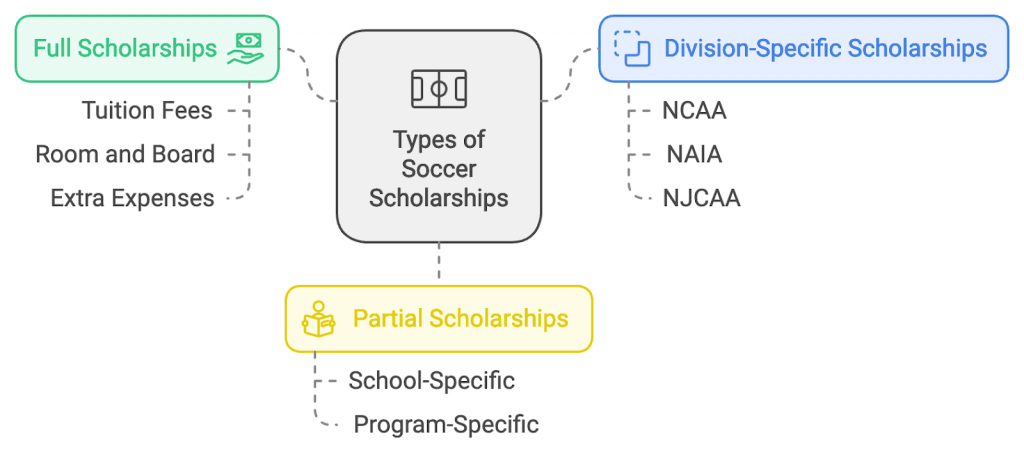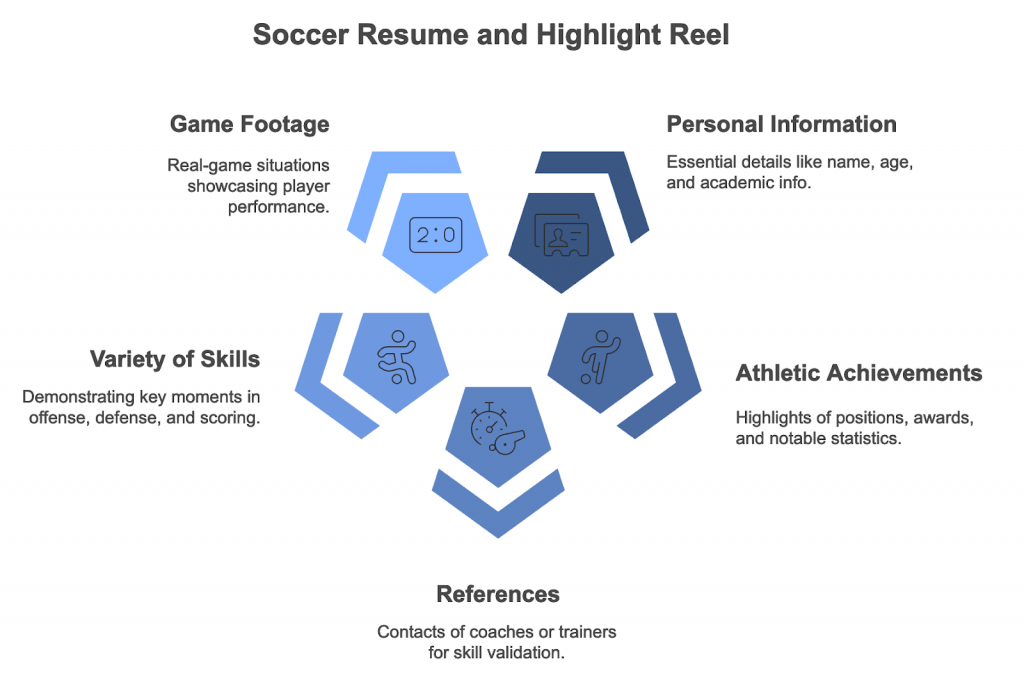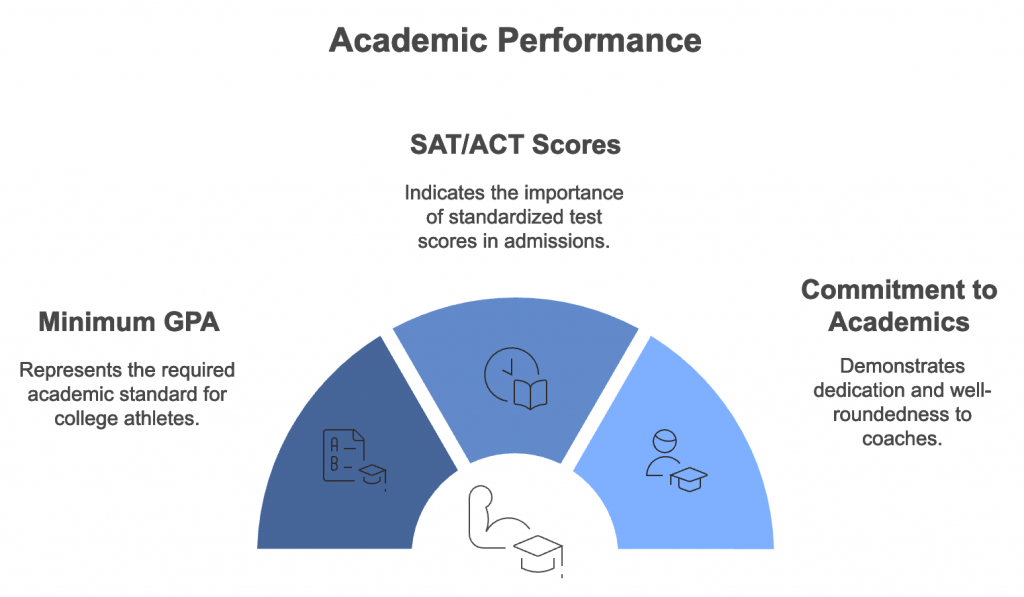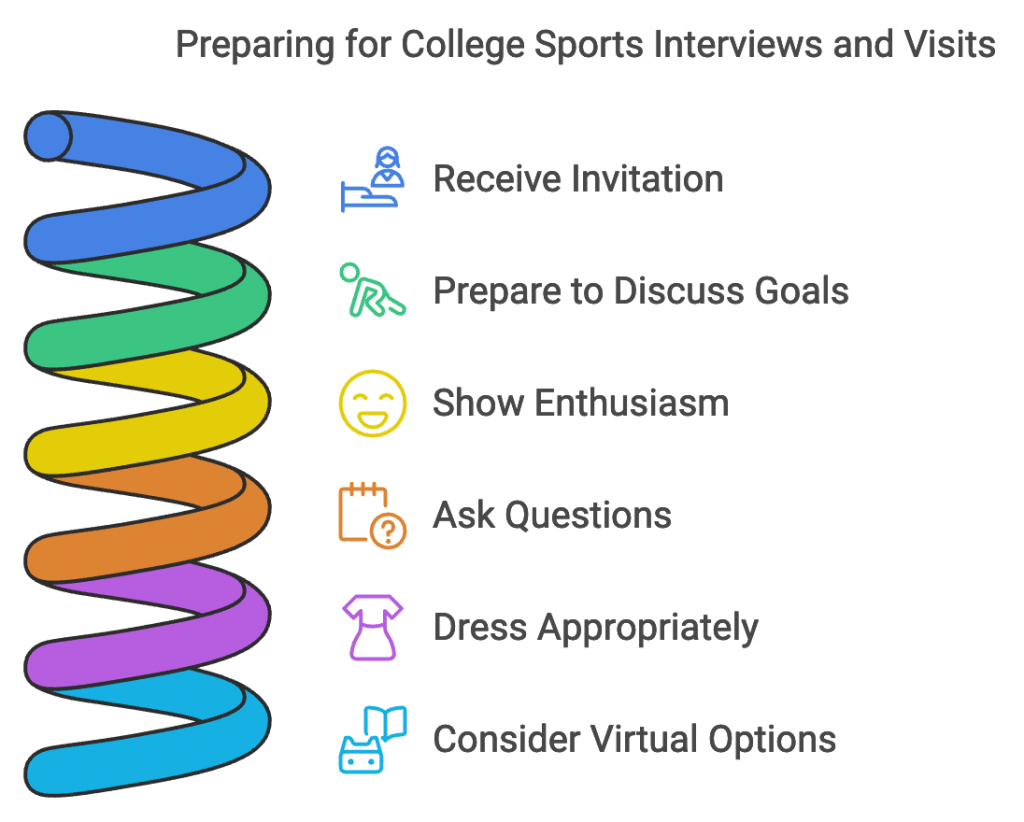How to Apply for Soccer Scholarships in the USA
If you’re a talented soccer player dreaming of studying in the United States, a soccer scholarship could be your ticket to combining academics with athletics. College soccer programs in the U.S. offer various scholarships to international and domestic players, helping cover tuition and other college expenses. Here’s how to navigate the process and increase your scholarship chances.
Step 1: Understand the Types of Soccer Scholarships
U.S. colleges provide several types of soccer scholarships, so it’s important to know what’s available. Scholarships vary in how much they cover, depending on the college program’s level and division.
- Full Scholarships. These cover all tuition fees, room, board, and sometimes even extra expenses like textbooks.
- Partial Scholarships. These cover some college costs and vary depending on the school and program.
- Division-Specific Scholarships. College sports associations (NCAA, NAIA, NJCAA) have scholarship rules. NCAA Division I schools, for example, frequently offer more scholarships than smaller NJCAA or Division III schools.

Step 2: Start Early and Build a Timeline
The recruitment process for soccer scholarships can be long, so it is better to start as early as possible. Most players begin the process in their sophomore or junior year of high school (around age 15-16), but it’s never too early to start planning.
Timeline Tips:
Starting early gives you more time to connect with coaches and showcase your skills, which can be the difference in earning a spot on a college team.
Step 3: Build an Impressive Soccer Resume and Highlight Reel
College coaches receive applications from hundreds of players, so we recommend standing out. A strong resume and highlight reel can make a powerful impression and give coaches insight into your abilities.
How to Build Your Soccer Resume
Your soccer resume should include the following:
Creating a Highlight Reel
Your highlight reel should be around 3-5 minutes, showcasing your best moments on the field. Make sure to include:
- Variety of Skills. Show key moments in offense, defense, passing, and scoring.
- Game Footage. Coaches want to see real-game situations rather than staged drills. Ensure your footage is clear and shows your jersey number to identify you.
- Link to Online Profile. Upload your video to YouTube or another accessible platform. Make it easy for coaches to view and share.

Step 4: Research Colleges and Contact Coaches
Researching colleges helps you find programs that match your athletic level, academic interests, and personal preferences. Use resources like NCSA (Next College Student Athlete) and TopDrawerSoccer to learn about schools, coaches, and their soccer programs.
Tips for Contacting Coaches
- Start with an Email. Introduce yourself, include a link to your resume, highlight reel, and express interest in their program.
- Follow Up. Coaches receive many emails, so don’t be discouraged if you don’t get a reply immediately. Follow up politely after a few weeks.
- Attend Camps or Showcases. Coaches scout players at these events, giving them a chance to see you play in person.
- Social Media. Some coaches are active on social media. Follow them to stay updated on their programs and, if appropriate, engage with their posts.
Step 5: Register with the NCAA or NAIA Eligibility Centers
You must register with the NCAA Eligibility Center for NCAA Division I and II schools. This registration confirms you can play college sports and meet academic standards.
You’ll need to register with the NAIA Eligibility Center, which has its rules and requirements for NAIA schools.
Both eligibility centers require fees, so check their websites for the latest registration costs and required documents (like transcripts or proof of amateur status).
Step 6: Keep Up Your Grades and Test Scores
Academic performance sets the tone in college admissions and scholarships. A bunch of colleges require a certain GPA, SAT, or ACT score for athletic scholarships, so staying focused on school is essential.
Academic Requirements to Remember:
Keeping up with your academics shows coaches that you’re committed and well-rounded, making you a more attractive candidate.

Step 7: Participate in Showcases and Tournaments
Soccer showcases and tournaments are valuable opportunities to be seen by college scouts. These events are often attended by coaches and scouts looking for talent. Participating in top-rated showcases or tournaments can let you play in front of multiple college coaches at once.
Well-known Soccer Showcases:
- Disney Soccer Showcase. Held in Orlando, Florida, this event attracts college scouts nationwide.
- IMG Cup. Hosted by the IMG Academy in Florida, the IMG Cup brings in top teams and coaches for scouting.
- U.S. Club Soccer National Cup. This is a significant event for youth soccer teams in the U.S., attracting a large audience of college scouts.
While these events can be competitive, they provide excellent exposure and are worth considering as part of your scholarship journey.
Step 8: Prepare for Interviews and Campus Visits
If you catch a college coach’s attention, they might invite you for an interview or campus visit. These interactions let you and the coach see whether the program fits well.
Tips for Campus Visits and Interviews:
- Be Prepared to Talk About Your Goals. Coaches want to know why you’re interested in their program and how you see yourself contributing.
- Show Enthusiasm. A positive attitude goes a long way. Be genuinely interested in the school, the team, and the coach’s philosophy.
- Ask Questions. Show that you’ve done your research by asking about the team’s training schedule, coaching style, or academic support for athletes.
- Dress Appropriately. Wear comfortable but presentable clothes for campus visits.
If you’re an international student, virtual interviews or online campus tours might be an option if travel isn’t feasible.

Step 9: Apply to Colleges and Submit Scholarship Applications
Once you’ve connected with coaches and found schools that fit your needs, it’s time to apply. Some schools have separate scholarship applications for athletes, while others may automatically consider you for scholarships based on your performance and coach recommendation.
Essential Things to Remember:
Step 10: Prepare for College Soccer and Beyond
Once you’ve accepted a scholarship, it’s time to prepare for college-level soccer. Training and balancing academics with sports can be intense, so developing good time-management skills is essential. College soccer is highly competitive, but it’s also a fantastic opportunity to improve your game, meet other players, and prepare for a future in soccer, whether that’s professional play, coaching, or sports management.
Applying for a soccer scholarship requires dedication, organization, and a proactive approach. By starting early, building connections, and showcasing your unique talents, you can make your dream of playing college soccer a reality. Good luck, and kick off your journey with confidence!



